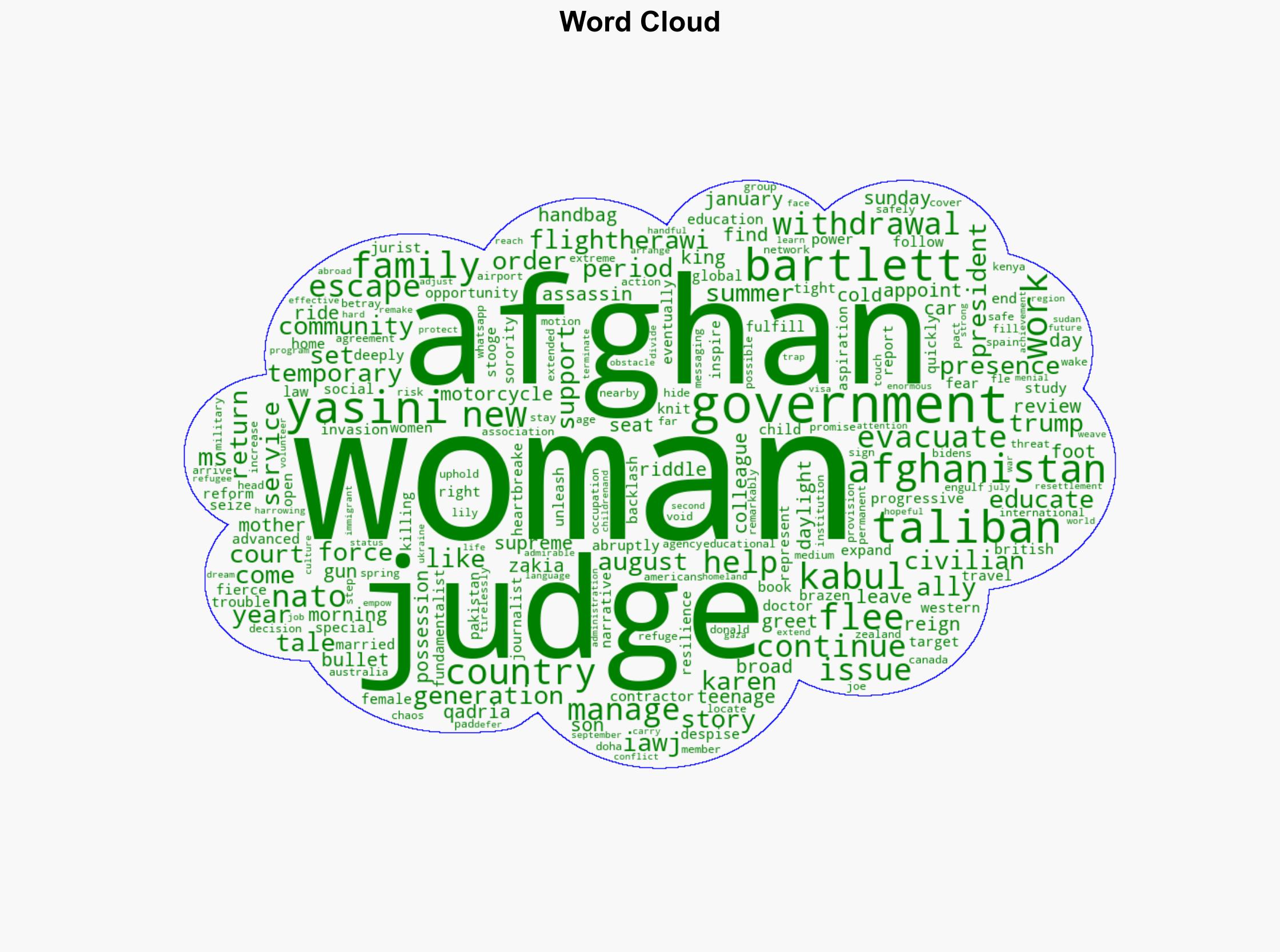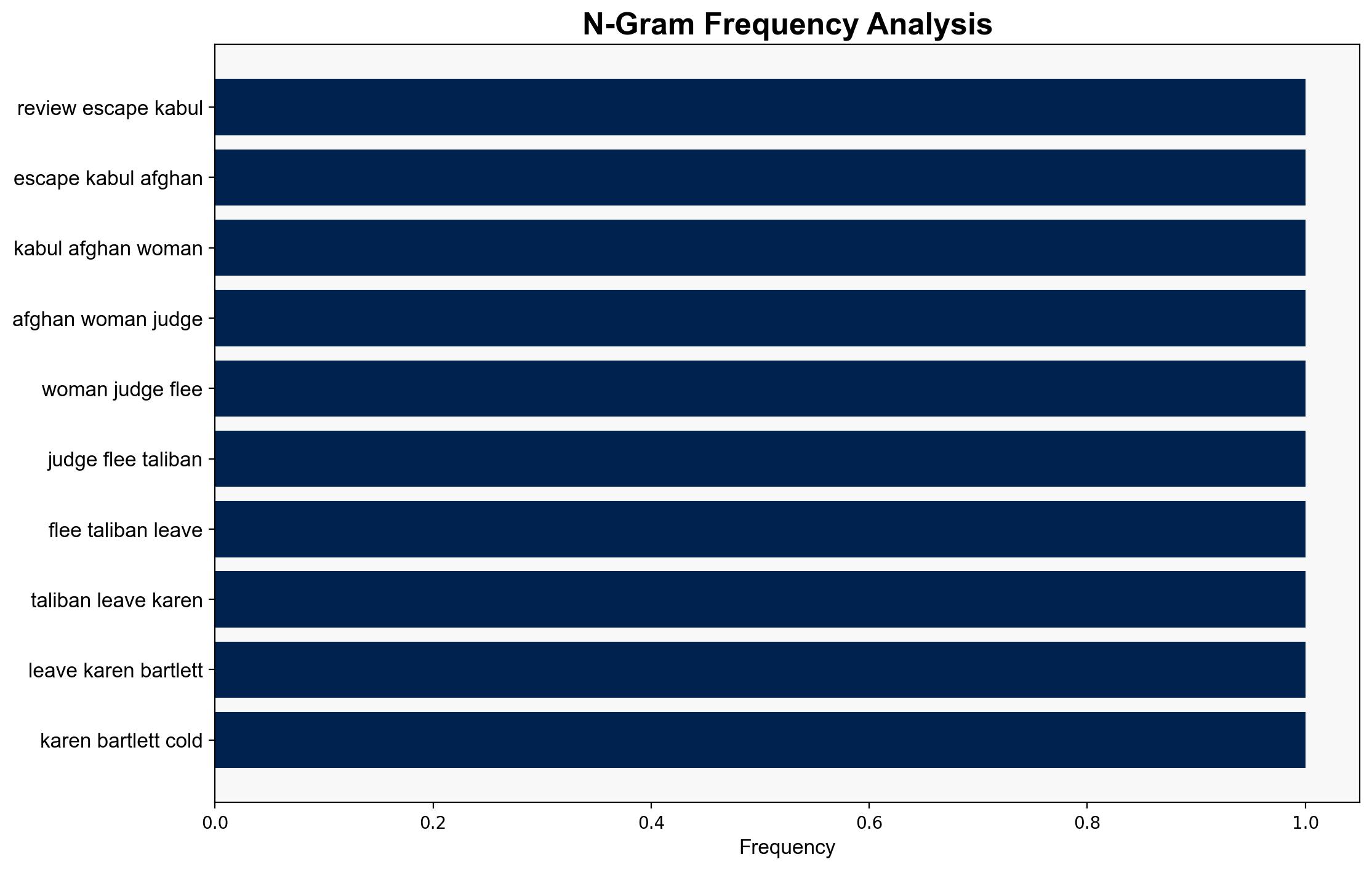Dreams Deferred The Oppression of Women Judges Under Taliban Rule – Ms. Magazine
Published on: 2025-07-28
Intelligence Report: Dreams Deferred The Oppression of Women Judges Under Taliban Rule – Ms. Magazine
1. BLUF (Bottom Line Up Front)
The most supported hypothesis is that the Taliban’s return to power has systematically targeted women judges as part of a broader strategy to dismantle progressive legal structures and suppress women’s rights in Afghanistan. Confidence Level: High. Recommended action includes international advocacy and support for evacuation efforts, alongside strategic diplomatic pressure on the Taliban to uphold women’s rights.
2. Competing Hypotheses
1. **Hypothesis A**: The Taliban’s targeting of women judges is primarily a strategic move to eliminate legal figures who symbolize Western influence and progressive reforms, thereby consolidating their control over the judiciary.
2. **Hypothesis B**: The targeting is less about strategic elimination and more about instilling widespread fear among women professionals, deterring them from participating in public life and reinforcing traditional gender roles.
Using the Analysis of Competing Hypotheses (ACH) 2.0, Hypothesis A is better supported due to documented instances of targeted killings and the symbolic significance of women judges in Afghan society. Hypothesis B, while plausible, lacks specific evidence of a broader campaign against all women professionals.
3. Key Assumptions and Red Flags
– **Assumptions**: It is assumed that the Taliban’s actions are centrally coordinated and not the result of rogue elements. Another assumption is that international pressure can influence Taliban policies.
– **Red Flags**: The narrative may overlook internal Taliban factions that might oppose such targeting. The reliance on anecdotal evidence from a limited number of sources could introduce bias.
– **Blind Spots**: The potential role of regional powers in influencing Taliban policies is not addressed.
4. Implications and Strategic Risks
– **Patterns**: The systematic targeting of women judges could lead to a broader rollback of women’s rights, affecting regional stability.
– **Cascading Threats**: Increased repression could lead to humanitarian crises and mass migrations, straining neighboring countries.
– **Potential Escalation**: If unaddressed, this could embolden other extremist groups in the region, increasing geopolitical tensions.
5. Recommendations and Outlook
- **Mitigation**: Strengthen international coalitions to apply diplomatic pressure on the Taliban. Increase funding for NGOs facilitating evacuations.
- **Opportunities**: Leverage global media to maintain focus on women’s rights in Afghanistan, potentially influencing public opinion and policy.
- **Scenario Projections**:
– **Best Case**: Taliban moderates under international pressure, allowing women judges to return to their roles.
– **Worst Case**: Continued targeting leads to a complete collapse of women’s rights, triggering regional instability.
– **Most Likely**: Incremental improvements with sustained international advocacy, but significant challenges remain.
6. Key Individuals and Entities
– Qadria Yasini
– Zakia Herawi
– Karen Bartlett
– International Association of Women Judges (IAWJ)
7. Thematic Tags
national security threats, women’s rights, regional focus, geopolitical stability




